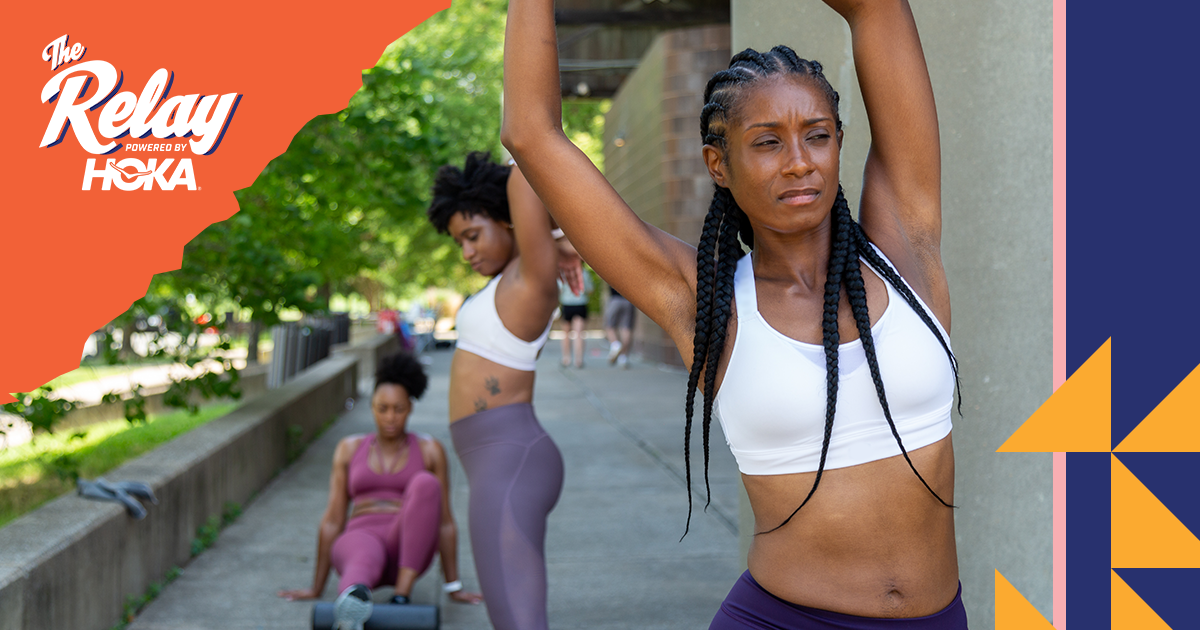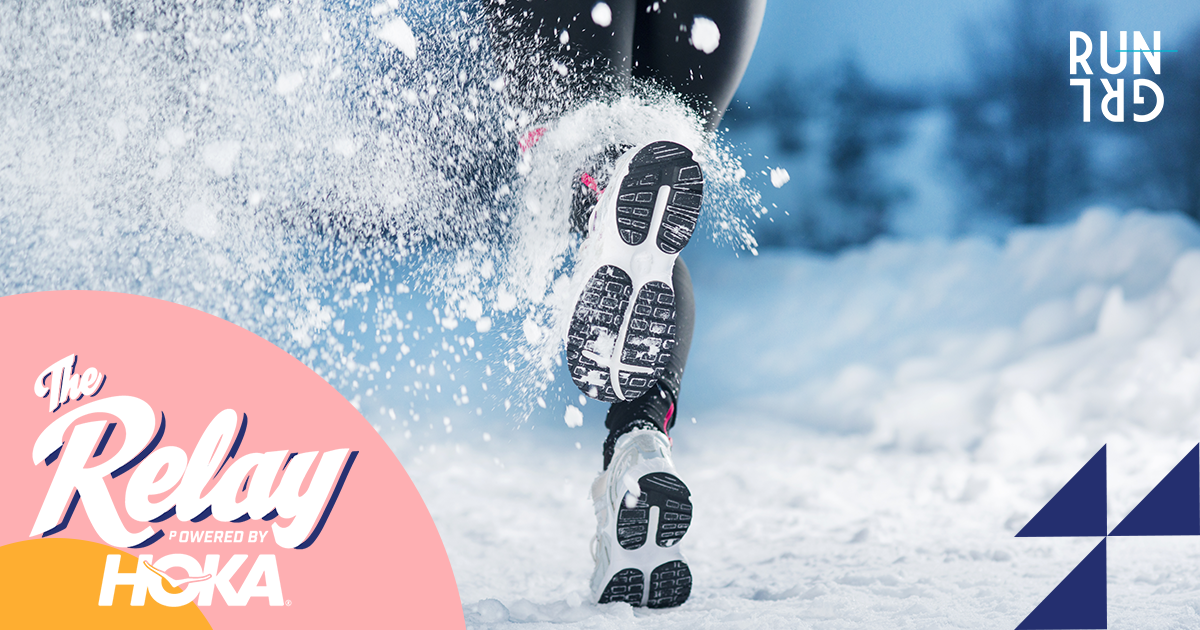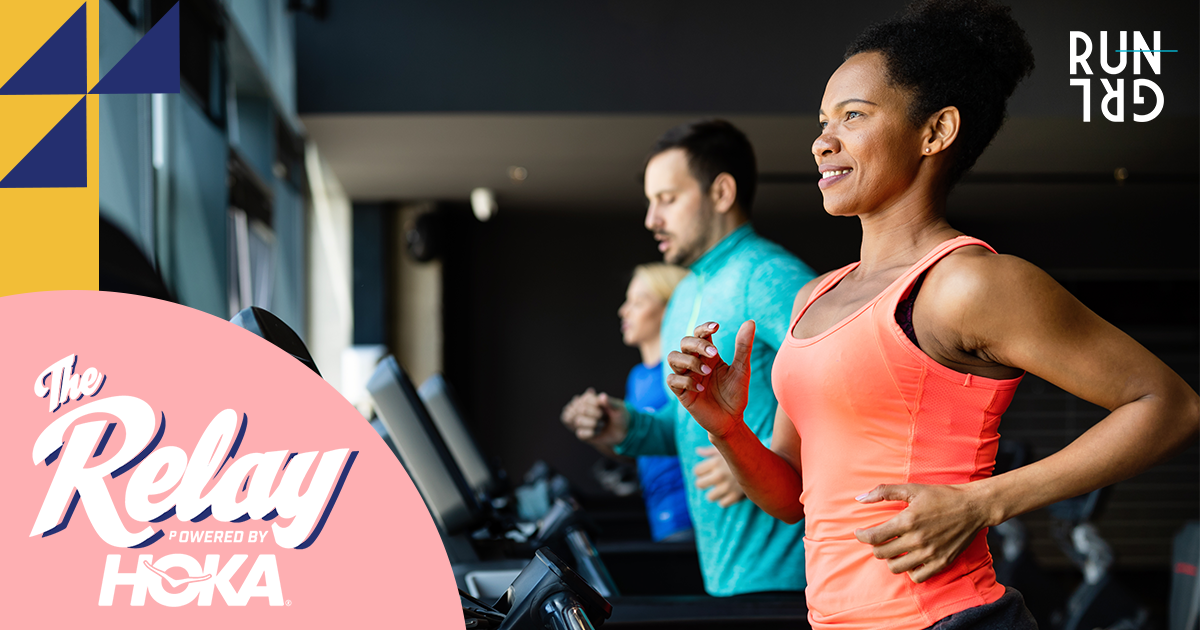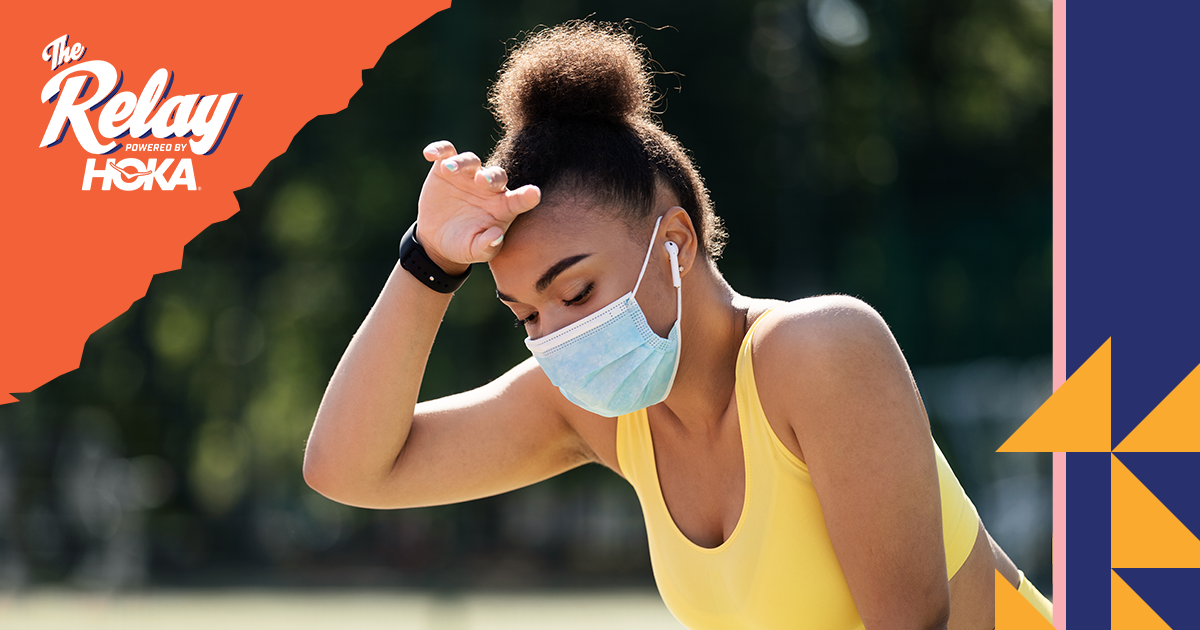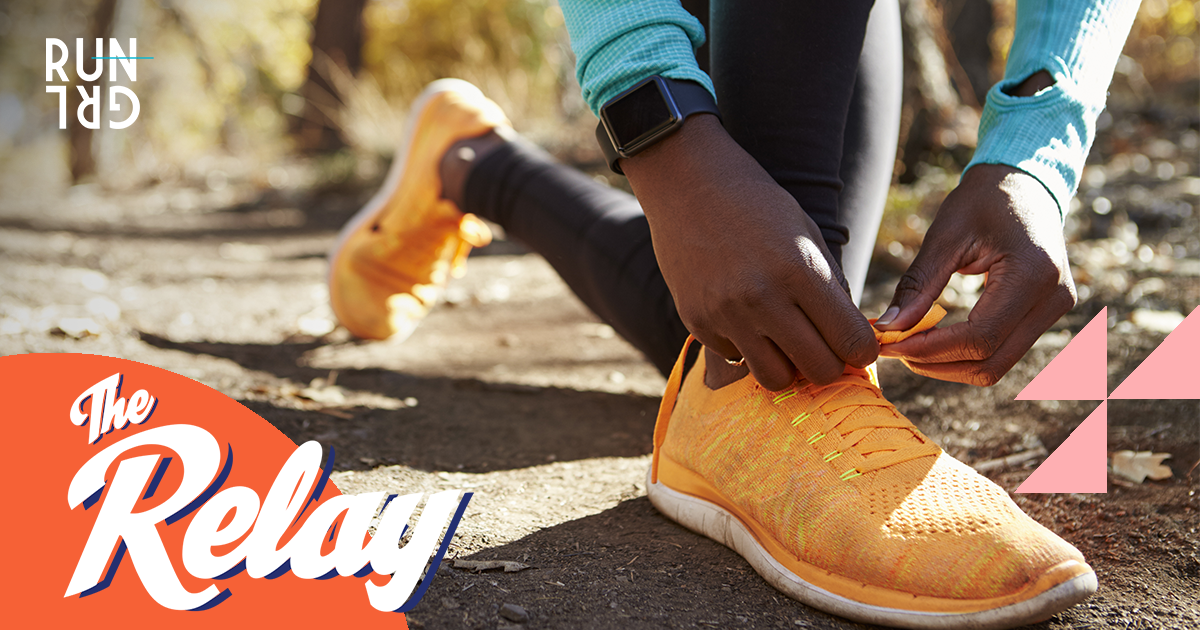The Relay: Why Runners Need Pilates in Their Lives
Photo: Peyton Thomas/RUNGRL Design
by Peyton Thomas, Relay Squad Contributor
Pilates has long been a popular form of fitness, but many people remain unclear on the differences between pilates and its popular cousin, yoga. Yoga uses movement to enhance flexibility and relaxation and, similarly, the principles of Pilates focus on the connection of the mind, body, and spirit.
The Differences Between Yoga and Pilates
Runners can benefit from both yoga and pilates as both increase strength and balance in ways that help running mechanics. Pilates moves increase strength and involve your entire body while also integrating relaxation into each movement. Many of these moves may seem simple, but you are engaging many muscles in each move.
Runners require more than just their legs to be strong, fast, and endurance worthy. A large part of running involves core strength, which coincidentally as mentioned before is a major target area of Pilates. Running involves your arms, shoulders, hips, glutes, every major part of your body. Pilates is the perfect supplemental strength workout for intense muscular control using many micro-movements. Since trying a few classes a couple years ago, I have found myself sore in very strange places but have also realized how much stronger I’ve felt from doing these movements regularly.
Any part of your core is fair game in pilates, including abdominals, back, hips, or glutes. A variety of moves strengthen these areas simultaneously and may help with back pain or poor hip strength and flexibility, which is extremely important for things like running up hills. Pilates sequences involving glute bridges and various leg lifts can help strengthen hip flexors and muscles through serial fatigue of the target areas during each movement.
As runners, we often focus on movements that work the legs and I often neglect my arms in normal strength training. So, I really enjoy using pilates as an arm workout as well. Listed below are a few moves and the variations that I have found to be helpful in my Pilates practice. Each movement involves full body precision to target all areas of your body.
The Moves
A good place to start is by doing each of these moves (with or without variations) for 30 seconds each, really focusing on the muscular control. None of the movements need to be big, because the micro-movements are what’s helping strengthen and define your body. You can do this in a sequence similar to a yoga flow or do it as you would do repetitions in a strength training session (ex: 3 x 30 seconds).
PUSHUP TO KNEES
Photo: Peyton Thomas/RUNGRL Design
Begin this move in a pushup position, with hands directly underneath your shoulders, back straight, hips down, and feet hip-width apart. Go down into pushup position with elbows tucked into your sides. Coming up from the pushup, press your hips back as if going into downward facing dog, but simultaneously bend your knees so you end up in an elevated child’s pose crouch position. Push yourself back up to pushup position and repeat. Focus on controlling every muscle engaged and go through this movement slowly to feel the most benefit.
TABLETOP W/ KNEE-HOVER + VARIATIONS
Photo: Peyton Thomas/RUNGRL Design
Set your body in tabletop position, with hands directly under shoulders, knees directly under hips, back straight, and toes tucked. Lift hips using your lower abdominals (this is important), slightly hover your knees above the ground, about 1-2 inches. The lift will seem very insignificant but when held for a while, your core starts to burn while your legs and arms tingle and shake. Hold this position or do the following variations:
Knee to Mat Taps - Tap knees to the mat and lift them right back up using your hips. Repeat, focusing on controlling hips and keeping them tucked while engaging your core. You should feel a burning sensation in your lower abdominals and quads.
Hand to Knee Taps - Tap one hand to your opposite knee or the same knee while hovering in tabletop. Focus on engaging your core and tucking your hips, maintaining stability and not swaying too much.
Arm Raises - In the hovering tabletop position, raise one straight arm up to ear level. Bring this arm down and repeat, switching arms as you go. Paying attention to what the hand is doing as well as you raise each arm, pointing the thumb up with fingers straight and held together. This move requires a lot of muscular control to prevent swaying.
Leg Lifts - Remain in tabletop hover position and lift one leg off the mat and straight out behind you with either pointed or flexed toes. Switch the positioning of your toes to engage your calf and foot muscles. If you want more of a challenge, combine the leg lifts with the arm raises while remaining in tabletop hover. Focus on remaining stable throughout the movements.
PILATES STANCE LEG RAISES + VARIATIONS
Photo: Peyton Thomas/RUNGRL Design
Lie on your back with legs straight up, arms by your side, and hips tucked in so your entire back is touching the mat. Point your toes and turn your feet out with heels touching, this is considered a Pilates stance. Keep legs, feet and core engaged the entire time. Hold this position or try these variations:
Leg Raises - With legs straight and in Pilates stance, slowly lower your legs towards the floor and lift up. Focus on your core, and only lower to the point where your lower back is about to come off of the mat. As your core becomes stronger, you will be able to lower your legs farther towards the mat.
Leg Circles - In Pilates stance, slowly move your legs in a circular motion of small movements, keeping the heels touching the entire time. Small circles work your core just as much if not more than larger circles. Remember to keep your lower back on the mat. Repeat moving your legs in the opposite direction.
GLUTE SQUEEZE + VARIATIONS
Photo: Peyton Thomas/RUNGRL Design
Lying on your stomach, rest your head in your folded arms, squeeze your glutes, and lift your legs. Your toes can be pointed or flexed, and play around with movements to engage both calves and feet. You can hold this position or move to the following variations:
Heel Beats - Maintaining your glute squeeze posture, points toes and turn them out as if in a disconnected Pilates stance. Tap your heels together while maintaining activation in the glutes and stability in your back and upper body. Tuck your hips underneath your pelvis, to protect your lower back from straining in this movement.
Swimmers - Keeping your glutes squeezed, legs straight, and toes pointed, flutter your legs up and down with one leg moving up while the other leg moves down. Try to focus on slow, micro-movements. Keep your arms folded underneath your head or bring your arms straight out in front of you and next to your ears.
Knee Lifts - With your glutes squeezed and arms folded underneath your head, bend your knees and keep them separate while your feet come together. Keep holding feet together while you squeeze and lift your legs in this bent-knee position. Try to maintain control and lift your hips off of the mat with each leg lift.
Let us know how you feel once you’ve tried these moves!
Got questions for our Relay Squad running coaches and athletes? Shoot us a message.
-
Medical Disclaimer - The above information is not intended as medical advice and does not replace the recommendation of a physician or other medical professional. Always seek the advice of your physician before trying these or any sort of workout or exercise program. View the full medical disclaimer in RUNGRL’s terms of use.
Peyton enjoys running as a way to connect with nature and hopes to inspire others to do the same. She began running in high school, competed collegiately for Baylor University, and currently runs for Without Limits in Wilmington. Her marathon best is 2:42:57 and she competed in the 2020 U.S. Olympic Marathon Trials.
Peyton is a member of The RELAY Squad.






